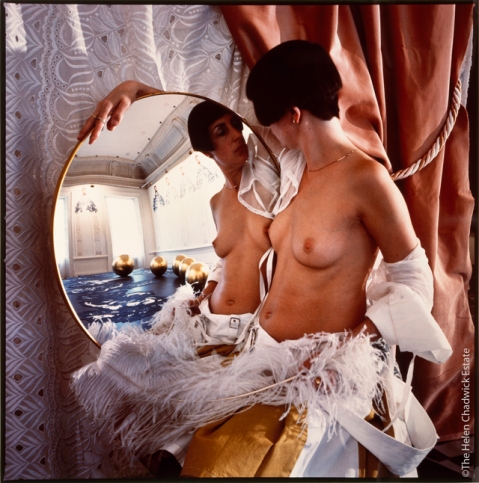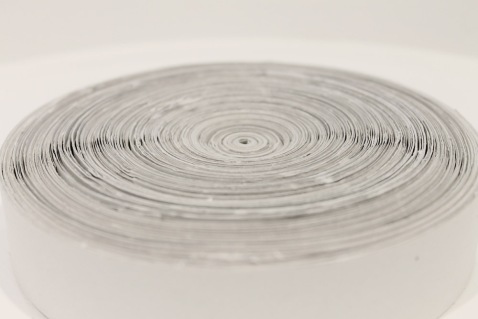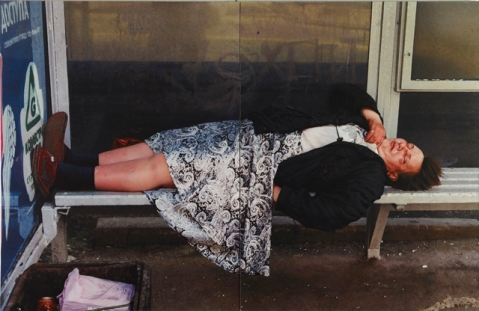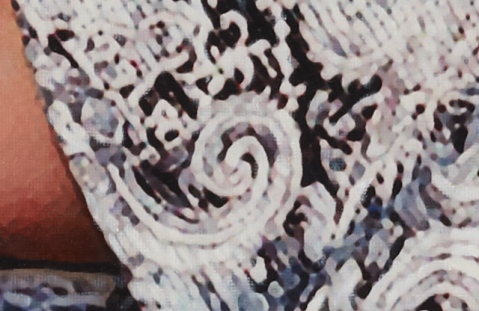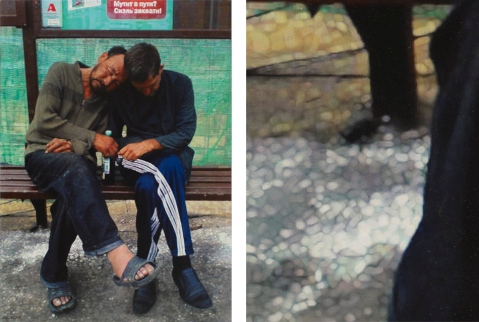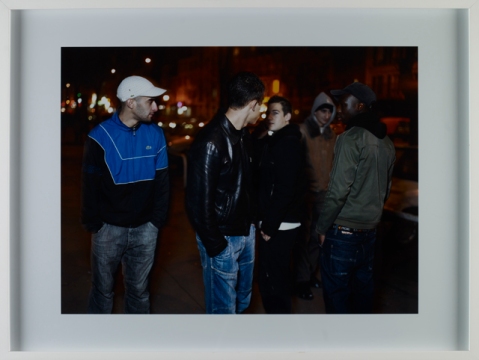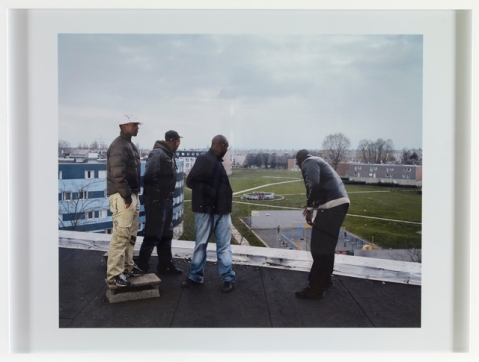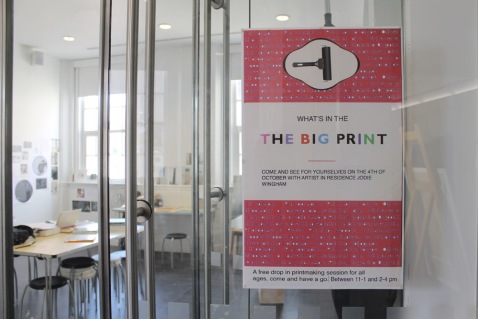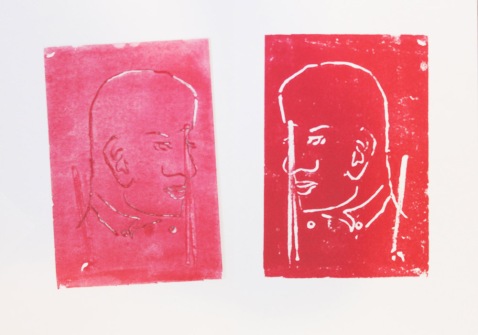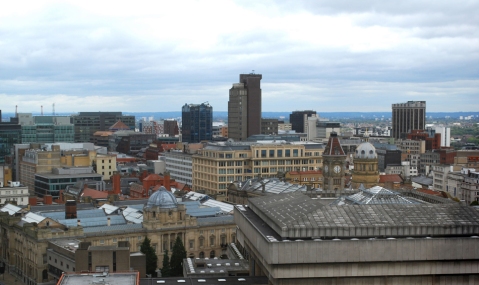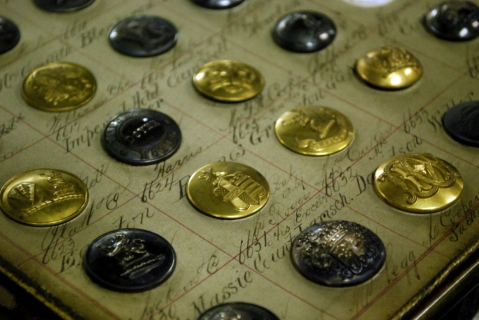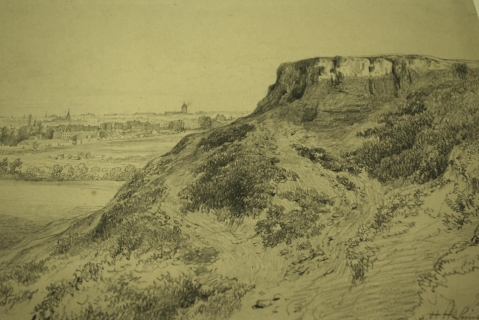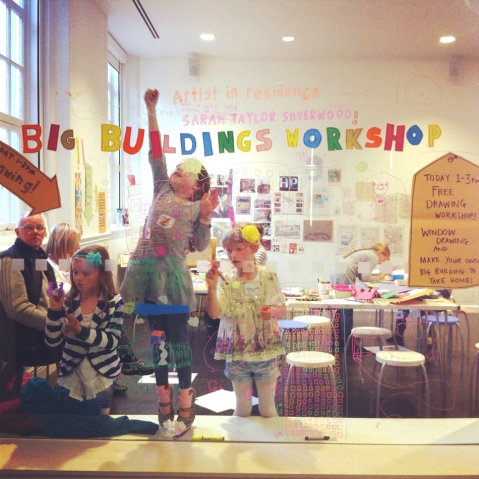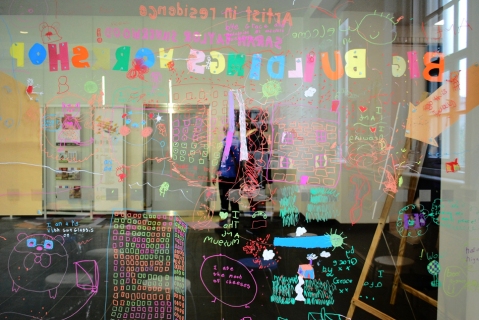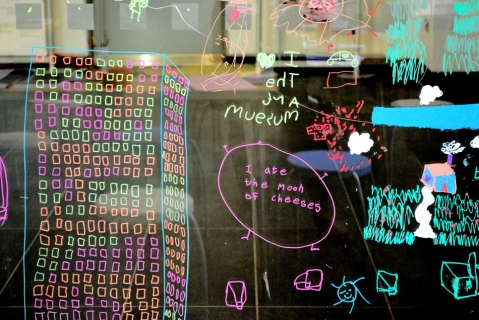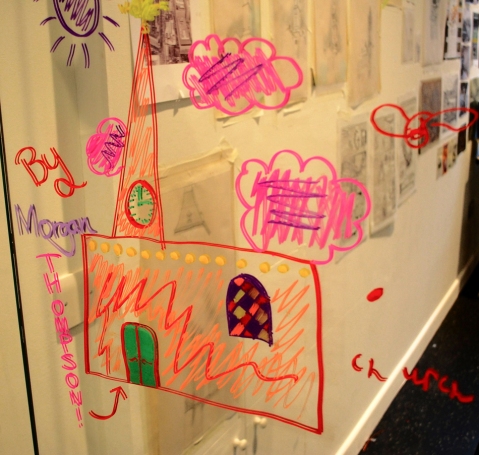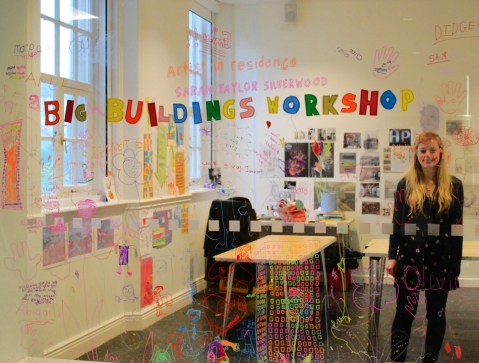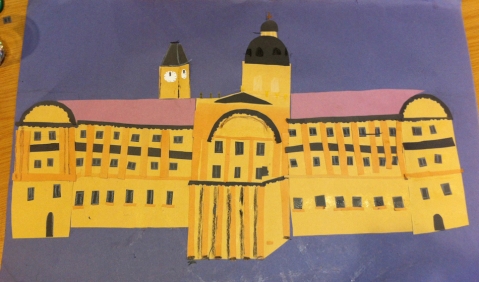Artist in Residence Jodie Wingham – Week Three
It is my third week at the Museum, and it has been a busy one before I leave on the 17th of October. This week I visited the Museum Collections Centre in Duddeston, home to all the objects not currently on site at Museums across Birmingham, I ran a ‘Big Print’ workshop on the 4th of October in my studio as one of many activities taking place within the Museum as part of Fun Palaces, and I have been working on my ideas for the Final work.
During my time at the Museum I have been carrying out research into pieces held at the Museum to generate a new piece of work in response to what I have seen. Taking inspiration from artists such as Hans Sebald Beham and Helen Chadwick who have used a circular shape within their work, I have been playing with this circular form as a basis to my work. When looking at these artists I became aware of the effect the circular form had on me as a viewer, the shape draws your attention into the image having associations with an old fashioned peep hole of which to view others through.
Here is a piece I am working on that incorporates this circular frame:
I have been playing with the use of coiled newsprint paper to form a circular surface on which to screen print upon, I am interested in the distortion of imagery to create a closer inspection from the viewer. During my residency I have seen many images that observe women carrying out certain actions from bathing to changing to sleeping, all private and quite intimate acts however, they are on display for us to observe. It is the subject of women and their image which I think I will focus on as the basis to my piece.
I wanted to learn more about how other artists have used photography within their work to stage certain acts and how they use technology to distort the images they work with. Two artists that do this are Mohammed Bourouissa and Semyon Faibisovich, artists who have pieces held at the Museum Collections Centre (MCC). It was a great opportunity to view the pieces in person and see the techniques used by the artists.
Semyon Faibisovich’s images examine contemporary urban life in his home town of Moscow and particularly the lives of those at the bottom of the social ladder. Using a mobile phone, Faibisovich takes photographs of people on the streets and uses these low resolution images to make his oil paintings, enlarging the images to life size and then painting over the image creating pixelated distortions. This was clear when up close to the works entitled Repose, from At the Stop series, 2009 and Sick on the Way?, 2008 from the same series.
Mohammed Bourouissa is an Algerian photographer who uses staged photography to create images that appear real, often depicting moments of physical or emotional tension through the careful arrangement of people and their gestures. They leave you questioning what has happened in the image or what will happen, I like the suspense he creates leaving you wanting more. I saw La rencontre (The Meeting) and Le toit (The Roof), 2005-2007 during my visit to the MCC and both looked at this tension between the characters depicted.
After viewing these specific pieces I spent the rest of my time exploring the vast number of objects and works stored within the centre, it is very easy to get carried away! These are just some of the things I came across:
The Museum Collections Centre (MCC) has a huge natural history collection, with examples of taxidermy ranging from delicate butterflies to a brown bear! Although not relevant to my practical work it was fascinating to see such an array of animals dating back from the 1800’s.
The MCC holds open afternoons for the public on the last Friday of every month and are open for pre-arranged tours and study days, for more information or to make a booking visit: www.bmag.org.uk/Museum-collections-centre.
Finally, thank you to everyone who came to ‘The Big Print’ drop in session to have a taster of what you can achieve through printmaking. From 11-4pm the studio was full of people experimenting with polystyrene prints and mono printing, some fantastic work was made which people could take home or add to the ‘Big Print’ wall in my studio to remain till the end of my residency.
Next week will be my final as artist in residence at BMAG, it has gone so quickly! I am keen to hold one last printing workshop, this time with adults, taking place on Friday the 17th of October between 12.30-2.30pm. We will be making bookmarks inspired by Edward Burne-Jones intricate woodblock patterns I came across in the collections using a Lino print.
Here is one of Edward Burne-Jones’s designs in the collection originally made for the boarder of a book to get you started:
Jodie Wingham,
Whitworth Wallis Artist in Residence
Artist in Residence Sarah Taylor Silverwood – Week 3
This week I have been to the Museum Collections Centre, I’ve been taking photographs on the roof of the gallery, and I ran a ‘Big Buildings’ drawing workshop. It has been really busy but full of inspiration and I’ve made a start of the final work I’m producing for the residency.
I want to produce a view of Birmingham inspired by some of the topographical views in the collection. When looking through these works, I have been trying to work out what angle they are taken from. It is difficult to find a good viewpoint (often people use a bit of artistic license to get what they want in) so I have been trying to find the perfect spot to draw from. The new Library of Birmingham has some fantastic views, so I climbed to the 9th floor to see what part of the landscape I could get in:
It wasn’t quite the right angle, and I wanted to get something that looked out from BMAG if possible. The BMAG security team took me up onto the roof of the gallery. The views are incredible, especially looking back at the library – you can see the tiny figures in the roof garden.
Alongside finding the right viewpoint I wanted to explore more of the work in the collection so spent a day at the Museum Collections Centre (MCC). It is a treasure trove of incredible things, from buttons to computers:
I am particularly interested in the work of Samuel Lines, so Jo-Ann Curtis (Curator) showed me this sketch done in preparation for making the painting below. It seems much less restrained than some of the more finished pieces.
Henry Harris Lines, eldest son of Samuel Lines, is a brilliant draughtsman and also uses Birmingham as the subject for his work. These two pieces depict the city which is very different from today but still holds some recognisable features:
The formality and style of some of these prints of Birmingham architecture is something I’d like to replicate in my drawing:
Finally I asked if we could look at some trade cards used by Birmingham based industries. They are beautiful objects in themselves, each full of intricate detail and typography. The importance of industry to Birmingham’s heritage is something I’d like to bring in to the new work. Thanks to Jo-Ann for a great day exploring the collections at MCC.
Finally, thank you to everyone who came to the Big Buildings Workshop on Saturday 12th October! We had over 100 visitors in 2 hours and they created some beautiful artworks. Below are a few photos of the giant window landscapes:
And people also made their own big buildings to take home. Maisy Kate Neal made a drawing of the Council House and Art Gallery, and then collaged over it.
This is my final week at BMAG. On Wednesday I am running a final Open Studio from 1-4pm. Come and find out more about the Artist in Residence programme and the new artwork I am making. Also there is an opportunity to be a part of my new work. I am asking members of the public if I can photograph them to draw from. Thanks to all the members of the public who came to be photographed last week, this is Shengwei posing for hers:
Sarah Taylor Silverwood,
Whitworth Wallis Artist in Residence
Just a normal day at the Museum Collections Centre
Preparing for Halloween Night October 28th 6pm – 9pm at the Museum Collections Centre in Birmingham.

